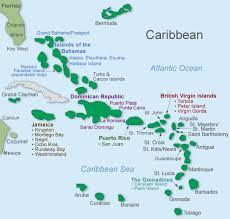
By Robert Hemphill & Leah Bissonette
One week and counting after Maria and most of Puerto Rico and the U.S. Virgin Islands are still without power. Which means they are also out of water, sewage management, air conditioning, and refrigerated food- because all those things rely on electricity. And, unfortunately, it is likely to take much longer to get the grid system back into a semblance of working. There are transmission and distribution lines to reconnect, transformers to replace, and generators to re-connect. And finally, oil and diesel to refuel.
Yes, the dirty secret about most Caribbean islands is that despite all their sunshine and tropical breezes, they are almost completely fueled by fossil fuel. (The U.S. Virgin Islands, for example, has two gas-fired plants and a few small solar plants but that’s mostly all there is besides fossil fuel.) And that’s why repeatedly throughout this crisis we have heard those interviewed on news shows bemoaning that they are out of diesel and can’t even run backup generators to power nursing homes, hospitals or other facilities. According to Bloomberg, only 11 of 69 hospitals in Puerto Rico have fuel or power. That’s unfortunate because solar facilities, in even parts of the island, especially as standalone microgrids with backup batteries, could have been very useful in providing for needed services without waiting for diesel fuel for backup generators. Of course, some of these might have been disabled by the overwhelming winds but to-date solar facilities (and wind also) have an admirable record of surviving natural catastrophes. Most solar panels are certified to withstand winds of up to approximately 140 miles per hour. Wind turbines in the recent Texas hurricane, for example, are reported to have endured unscathed by winds of up to 130 miles per hour.
But, instead of second guessing, let’s take a proactive approach and look to the islands’ immediate and future needs. According to the American Public Power Association, some 55% of transmission towers in Puerto Rico may be down and more than 90% of the distribution system could potentially be destroyed. To make matters worse, most of the island’s power plants are on the south side of the islands, connected over a mountain range to the cities on the north side. The island’s governor has said that under normal conditions it would take PREPA two years to rebuild that system. (PREPA is the local utility in Puerto Rico.) Unless more thoughtful heads prevail PREPA and FEMA will undoubtedly move doggedly ahead to rebuild the existing system one transmission/distribution line at a time, block by block. There’s a better way.
Because of advances in the cost of renewables, new solar PV systems, including backup storage, are more cost-effective than the previous fossil-fueled generation. Instead of just blindly re-building an aging grid system, the island utilities need to consider replacing their systems with more solar and storage wherever it’s effective.
Microgrid systems using solar and batteries can provide a good, fast, and cost effective alternative for many projects. Hospitals, nursing homes, hotels, and schools could benefit from microgrid systems using solar and backup batteries which could be installed quickly (once delivered to the island) and these facilities then would not have to wait while miles of transmission lines are replaced before they have service. Of course, a limited size solar-battery system will not be large enough to provide 24-hr service for all types of facilities but in most cases it could provide an adequate system to handle electrical needs for at least several hours a day. And these systems can be up and running while the rest of the grid system is being repaired- which could take six months or more.
Building these systems is not a waste because their generation can be cheaper than the islands’ existing fossil fueled systems. For example, in Arizona, Tucson Electric recently contracted for a solar power purchase agreement backed up with batteries that will deliver power for 4.5 cents/kWh. Importing equipment to the islands will add costs, of course. But consider the alternative: the cost for power delivered in Puerto Rico before the storm was more than 20 cents/kWh. (In the Virgin Islands the price was even higher, 32 cents/kWh.) Thus, once the overall grid is repaired and replaced, these systems can be connected to the larger system. They can continue to generate electricity- at a savings to the island- and they can have the reliable 24-hr backup of the larger grid.
Additionally, PREPA should consider acquiring some of the land that will become available as a result of the large scale destruction of buildings. When large sites near developed areas with reasonable electrical load need to be cleared, it will be an ideal time to acquire the land and use it to build new utility scale PV solar facilities. Again, note that building and using solar PV would represent an immediate cost savings for energy generation on the island- and many articles have already pointed out that the island will need an economic boost to overcome the downturn from the hurricane effects.
Of course, securing the financial arrangements to develop microgrids and to install new large scale solar are not insignificant, especially on islands with so many other challenges. The local utility will need to work closely with both local government and federal government offices, including FEMA, to affect such projects. Individual facility owners will need to show creativity to reach out in such times to choose these new alternatives. The utility regulators will also need to support immediate alternatives so that tariffs and special arrangements are available to assure that individual parties that on their own “do the right thing” by building their own microgrid systems don’t face excessive regulatory problems, such as caps on self-generation or high interconnection charges. But a wonderful opportunity is available to provide power relatively quickly to some of the neediest facilities, and to do so in a way that is less costly and more environmentally sound that the previous system. This could really save the Caribbean, today and tomorrow.
Mr. Hemphill is the Chairman and CEO of Sunshine Soldiers, a non-profit focused on education activities happening in energy, especially with regard to the adoption of renewable energy technology by utilities, commercial customers and homeowners, and strategies to benefit from it. Hemphill is also the author for two business travel books, Stories From the Middle Seat: The Four-Million-Mile Journey to Building a Billion Dollar International Business and Dust Tea, Dingoes & Dragons: Adventure in Culture Cuisine & Commerce from a Globe-Trekking Executive.
